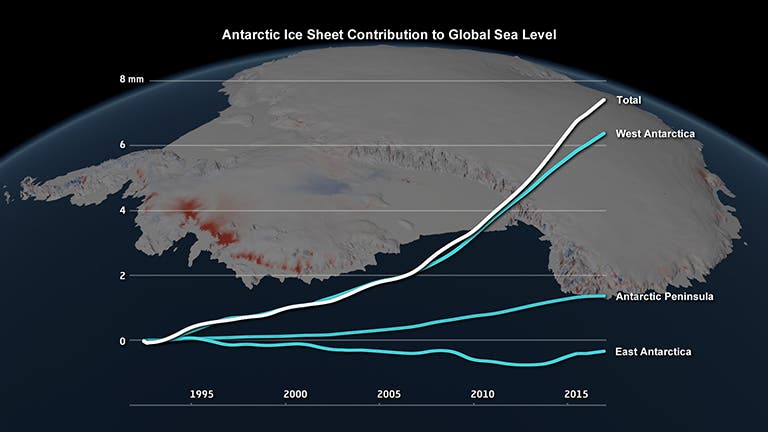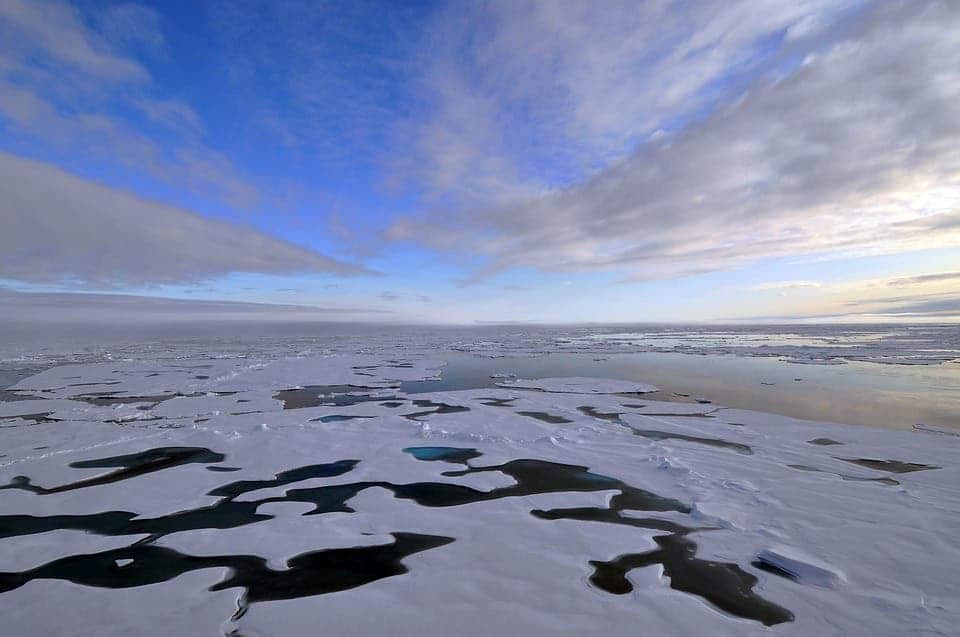Atmospheric rivers are narrow corridors of moisture that move horizontally across the planet. They play an important role in the global water cycle — although these ‘rivers’ cover less than 10% of the planet’s atmosphere, they’re responsible for 90% of the global north-south water vapor transport. Now, researchers have found another effect of these atmospheric rivers: they open up holes in the Antarctic sea ice.
Storms have been known to trigger large openings in sea ice — openings that can be tens or even hundreds of thousands of square kilometers across. But storms alone can’t explain why these openings (also called polynyas) form the way they do. Now, a team of researchers at Khalifa University in Abu Dhabi, United Arab Emirates, believe they have the answer.
Diana Francis and colleagues analyzed major two major polynya events, from 1973 and 2017, finding that atmospheric rivers bringing heat and water vapor played a key role in the event. In 2017, one such river singlehandedly raised air temperatures in the Weddell Sea in West Antarctica by 10°C.
The interaction is complex. It’s not just that the rising temperatures melt and break the ice. The heat and water vapor also make storms more intense, which also contribute to ice breaking. So the atmospheric rivers contribute both directly and indirectly to this process.

Polynyas aren’t necessarily bad: on one hand, they can be good for the local environment.
“Polynyas strongly influence the physical and ecological dynamics of the Southern Ocean,” said co-author Kyle Mattingly, a post-doctoral researcher at the Rutgers Institute of Earth, Ocean, and Atmospheric Sciences. “They serve as giant ‘windows’ in the sea ice that allow large amounts of heat to move from the ocean to the atmosphere, modifying regional and global ocean circulation. They also affect the timing and magnitude of phytoplankton (algae) blooms, which are the base of the marine food web.”
But from a climate perspective, this is troubling. The open sea is darker than the ice that covers it, which means it absorbs more heat, which can melt even more ice and so on, contributing to a local and even a global warming. To make matters even more concerning, global warming is expected to increase the frequency of atmospheric river events by around 50% if the current trends continue.
Greenland and Antarctic ice sheets are growing thinner as a result of man-made greenhouse emissions. But the phenomenon isn’t always linear or clear. This is why understanding the interlinked processes that shape the Antarctic is so important for our overall understanding of climate change.
“Our study will pave the way for greater understanding of climate variability and climate change in these regions,” concludes Mattingly.
Journal Reference: “On the crucial role of atmospheric rivers in the two major Weddell Polynya events in 1973 and 2017 in Antarctica” Science Advances (2020). advances.sciencemag.org/lookup … .1126/sciadv.abc2695
Was this helpful?




